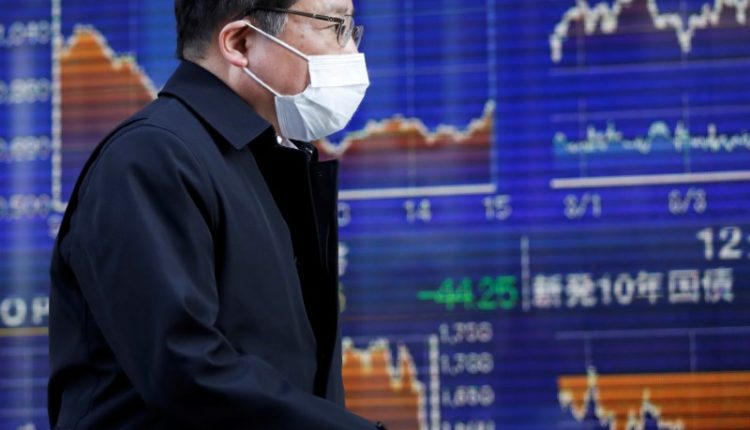Asia cautious as U.S. riots weigh on S&P futures
By Wayne Cole
SYDNEY (Reuters) – Asian share markets started on a cautious note and gold gained on Monday as images of riots in burning U.S. cities unnerved investors already tense over Washington’s power struggle with Beijing.
E-Mini futures for the S&P 500 (ESc1) retreated 0.5% in early action, while gold rose 0.77% to $1,739 an ounce . Oil prices also slipped, while sovereign bonds picked up the usual safe-haven bid.
MSCI (NYSE:MSCI)’s broadest index of Asia-Pacific shares outside Japan (MIAPJ0000PUS) edged up 0.2%, as did Japan’s Nikkei (N225).
“If American consumers were reluctant to come out of their Covid19 lockdown cocoon, fearing a secondary spreader with police cars ablaze, freeways blocked, and videos of mass looting shared through social media like wildfire, they’re not going to feel any safer,’ said Stephen Innes, chief global markets strategist at AxiCorp.
Major U.S. cities were cleaning up streets strewn with broken glass and burned out cars as curfews failed to stop confrontations between activists and law enforcement.
Protesters have flooded streets after weeks of lockdowns during the coronavirus pandemic that threw millions out of work and hit minority communities especially hard.
The turmoil was a fresh setback for the economy which was only just emerging from a downturn akin to the Great Depression. Following poor data on spending and trade out on Friday, the Atlanta Federal Reserve estimated economic output could drop a staggering 51% annualised in the second quarter.
The May jobs report due out on Friday is forecast to show the unemployment rate surged to 19.8%, smashing April’s record 14.7%. Payrolls are expected to drop by 7.4 million, on top of the 20.5 million jobs lost the previous month.
“Current unemployment numbers go far beyond what has been experienced in any post-war recession,” wrote Barclays (LON:BARC) economist Christian Keller in a note.
“To the extent that some sectors may never return to pre-pandemic business-as-usual, labour faces a substantial challenge to reallocate workers,” he added. “Such a process could be a matter of years rather than months or quarters and in the meantime it would weigh on consumer demand.”
In Asia, an official business survey from China over the weekend showed its factory activity grew at a slower pace in May but momentum in the services and construction sectors quickened, pointing to an uneven recovery.
Bond investors suspect economies will need massive amounts of central bank support long after they reopen and that is keeping yields super low even as governments borrow much more.
Yields on U.S. 10-year notes (US10YT=RR) were trading at 0.66% having recovered from a blip up to 0.74% last month when the market absorbed a tidal wave of new issuance.
The decline in U.S. yields has been a burden for the dollar, but the world’s reserve currency also tends to benefit from safe-haven status to limit the losses.
Early Monday, the dollar was a fraction softer on a basket of peers at 98.223 (=USD) having touched an 11-week low of 97.944 on Friday. It was steady on the yen at 107.76 .
Much of the dollar’s recent decline has come against the euro which has been broadly boosted by plans for an EU stimulus package. The single currency was last at $1.1114 (EUR=) after climbing 1.8% last week.
Markets are awaiting a meeting of the European Central Bank on Thursday where it is widely expected to raise its asset buying by around 500 billion euros to 1.25 trillion.
In commodity markets, oil prices started soft on worries about U.S. demand, but found some support from reports Russia had no objection to the next meeting of OPEC and its allies, known as OPEC+, being brought forward to June 4 from the following week.
Brent crude (LCOc1) futures were off 8 cents at $37.76 a barrel, while U.S. crude (CLc1) dipped 13 cents to $35.36.

